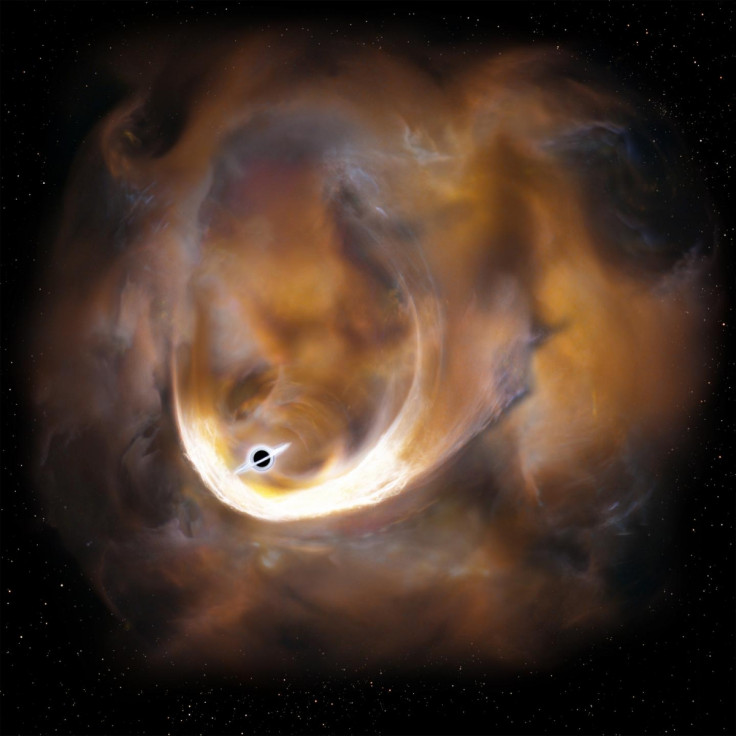Intermediate black hole and second largest in Milky Way potentially discovered

A new type of black hole and the second largest in our galaxy may have been discovered, say astronomers from Japan. The black hole is thought to be in the middle of an enigmatic gas cloud located 200 light years from the centre of the Milky Way.
The researchers found that this gas cloud, known as CO-0.44-0.22, moves at such varying speeds that a specific type of black hole is thought to be the cause. Should this be the case, it would be the first ever official discovery of a third classification of the phenomenon – an 'intermediate' black hole.
The gas cloud has been spotted 200 light years from the centre of the Milky Way, which spans 100,000 light years across. Researchers found that the cloud has an usually wide range of velocities – some were moving very fast as they approached a certain point and then moved slower as they moved away from it.
In other similar cases, the huge range of speeds has been due to an internal energy source – for example, a violent supernova explosion. However, with CO-0.44-0.22, the scientists could not find any such compact objects.
Tomoharu Oka, lead author of the study from Keio University in Japan, said: "Considering the fact that no compact objects are seen in X-ray or infra-red observations, as far as we know, the best candidate for the compact object is a black hole." If confirmed, this black hole would be the second largest found in the Milky Way, behind Sagittarius A*, or Sgr A*.
If the scientists are correct in their theory, this would mean that a third type of black hole has been officially discovered – joining supermassive and stellar-mass black holes. The new type, which is dependent on size, would be known as an intermediate black hole, and could lead to astronomers finally understanding how supermassive black holes are formed. Theories suggest that intermediate black holes merge together to create supermassive black holes. But seeing as there have not been any observations of them so far, scientists cannot as yet confirm this is the case.
The results of the study, published in The Astrophysical Journal Letters, have now opened the door to investigating other gas clouds similar to CO-0.44-0.22 to try and spot more of this type of hole. Scientists plan to use instruments including the Nobeyama 45-m Telescope in Japan and Atacama Large Millimeter/submillimeter Array (ALMA) in Chile – a combination of 66 radio telescopes all used in unison to search for the dark voids.
"Investigations of gas motion with radio telescopes may provide a complementary way to search for dark black holes," said Oka. "The on-going wide area survey observations of the Milky Way with the Nobeyama 45-m Telescope and high-resolution observations of nearby galaxies using the ALMA have the potential to increase the number of black hole candidates dramatically."
© Copyright IBTimes 2025. All rights reserved.






















